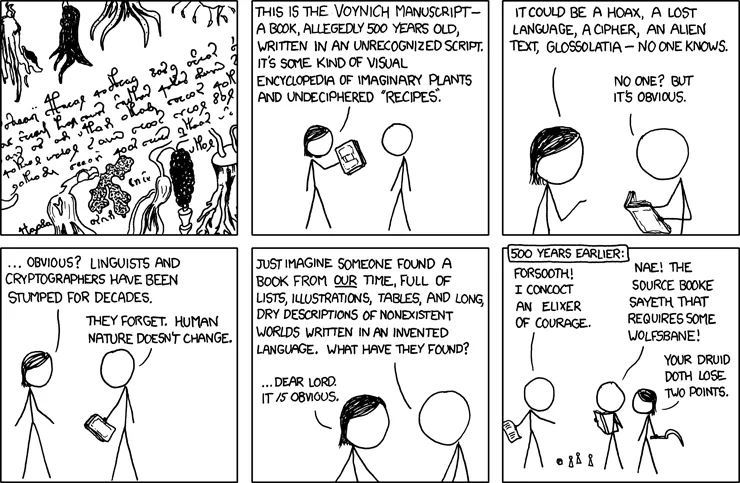Is One of the Weirdest Books on the Planet Actually a Hoax?
This small book has puzzled scholars for decades and remains a mystery
/https://tf-cmsv2-smithsonianmag-media.s3.amazonaws.com/filer/02/55/02559b7b-e9fd-4606-862b-ad3725740be5/1024px-voynich_manuscript_170.jpg)
Written in a language whose meaning has either been lost to time or was entirely invented, the Voynich manuscript may be one of the weirdest books on the planet. It has puzzled scholars for decades, as they have pored over the vellum pages and brightly colored illustrations, looking for some hint of meaning.
Now housed at Yale’s Beinecke Rare Book & Manuscript Library, the manuscript was reportedly discovered by a bookseller named Wilfred Voynich in 1912. Amidst the strange alphabet, there are drawings that seem to cover five different subjects: Cosmology, Astronomy, Biology, Botany and Pharmacy. (Pharmacy, in this context, means medicinal plants.)
No one knows where the manuscript originated, though one of the most prominent theories is that it could have been written by Roger Bacon, a 13th century English academic and alchemist.
Researchers have been trying to decode the alphabet, an effort that could lead to scientific advances in fields like genetics or neurology. But no one has successfully translated the entire text itself. It remains an intense area of study, with new breakthroughs published every few years. The materials of the book itself have also been extensively analysed.
Of course, it could all be a hoax that has simply run for a very, very long time.
From the BBC’s Simon Worral:
I believe the manuscript is a forgery by Wilfrid Voynich himself. One of the most common tropes in the history of forgery is that of a rare book dealer "discovering" previously unknown manuscripts. Voynich is known to have had just this "magic" touch. He is also said to have acquired a large supply of vellum and to have used his knowledge of chemistry gained at the University of Moscow to replicate medieval inks and pigments. Readers' tickets for his shadowy friend, Sidney Reilly, show that among the books that the "Ace of Spies" studied at the British Museum library was Some Observations On Ancient Inks.
Or, you know, it could have just been a very elaborate rulebook:
